|

Sunburst and stars album quilt
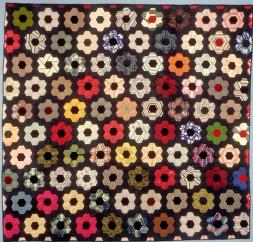
Mosaic or Honeycomb Quilt
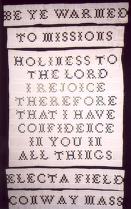
"Be Ye Warmed" Quilt
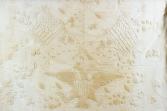
Candlewick Spread

Rising Star Quilt
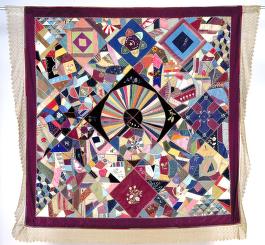
Crazy Quilt with Netted Border
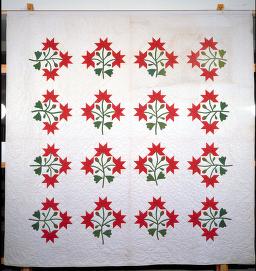
Peony Quilt
|
Summary and Objective
Students will support individual interpretations of literature by creating quilt squares based on their individual roles following the reading of a variety of slave narratives. Students will synthesize history and literature by researching details and other information that is mentioned in the slave narratives in order to complete quilt squares. Finally, students will understand that they can interpret their explorations through the art form of quilting by completing four quilt blocks based on guided journal questions.
Teaching Plan
Step 1.
Following the reading of a variety of slave narratives, such as Incidents in the Life of a Slave Girl by Linda Brent, Narrative of the Life of Frederick Douglass, The History of Mary Prince, The Life of Olaudah Equiano, or others, students will randomly draw character roles from a hat. The roles should be based on all characters from the narratives: slave owners, slaves, abolitionists, and any other significant people.
Step 2.
In character, students will be completing two tasks. First, they will be gathering notes and other pertinent information in order to later create quilt squares that are a reflection of their individual characters. Secondly, students will work with other "characters" of the same group to review the slave narratives searching for clues to answer the following questions: Theme – each person in your group has had different experiences through this process but what is a common theme among all of you? (Strength, love, family, overcoming obstacles, just to name a few.) One quilt block should illustrate the theme of your shared experiences. If there is more than one common theme you are more than welcome to put both on your quilt block.
Your identities – Who were you as individuals? Who were you as a collective group? How can people identify you just from your quilt block? How could your children, and your children’s children identify their history based on your quilt block? What do you share, what do you keep as your personal identity?
The documents – who were the authors of your documents? How were their lives influential (or how did their lives shape) to the documents? How does understanding the history, reputation and the life of the author add more specific meaning to the documents themselves?
Final thoughts – each and every one of us comes to this assignment with prior knowledge of at least some piece. What did your group learn from this unit? What of history can be carried forward to today’s world?
Step 3.
Students will then review the various quilts chosen for this lesson, noting particularly patterns, use of color and material, and designs in the stitches themselves. Students will also observe and discuss any symbolism that may be found in the quilt squares, similar to the interpretations they noted when reading the slave narratives.
Step 4.
Students will also review the quilt code and the two articles that dispel the myth of quilt codes based on the fact that no evidence exists to prove it correct. (A brief summary of the quilt code indicates certain patterns were used as directional symbols that slaves could follow from station to station. In quilting there are set patterns that have multiple names that would have been recognized easily such as a North Star, the quilter would make the point of the star higher than the rest and would show which direction to set out on. Drunkard's Path is another common symbol indicated by pieced segments that are wavy - this symbol would indicate that the path to follow was not a straight line but perhaps an animal path through the woods. The main point of those supporting the quilt code indicate that the patterns were simple so that they could be memorized, familiar enough so that even a stranger to the area could follow the directions, yet generic enough so that to the untrained eye it would simply look like another quilt. See internet links below)
Step 5.
Student groups will create quilts based on symbols, traditional quilt patterns and their own creativity to record their visual record of their impressions of the various slave narratives based on theme, identities, documents, and their final thoughts.
Step 6.
As a conclusion to the activity, students will write an open response journal entry, in character, taking a side on the quilt controversy - Was there a secret quilt code used to help escaping slaves, even though no "evidence" exists?
|




